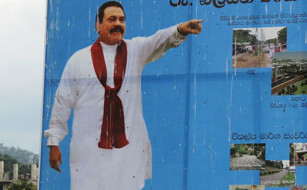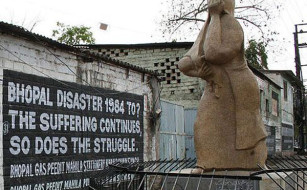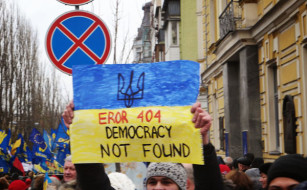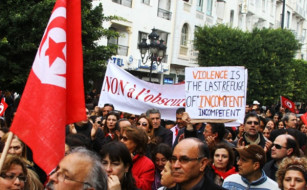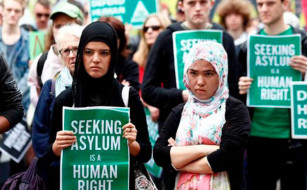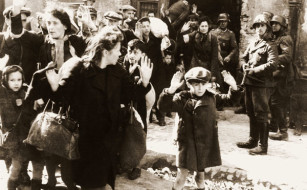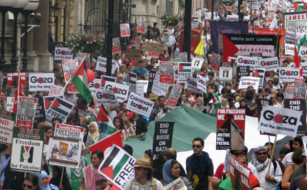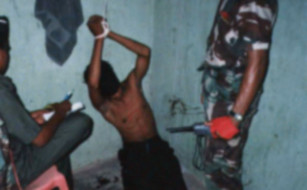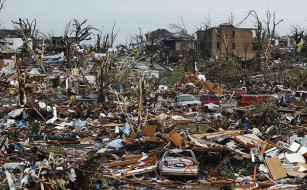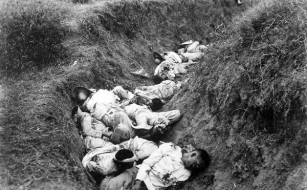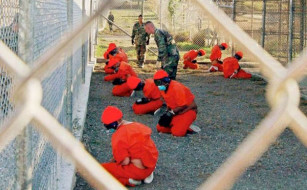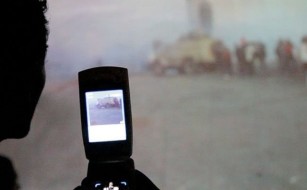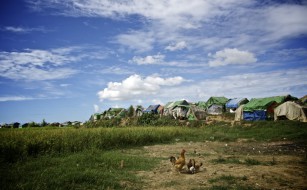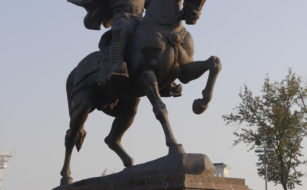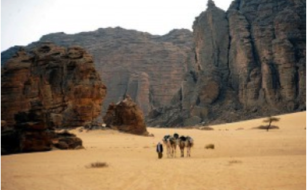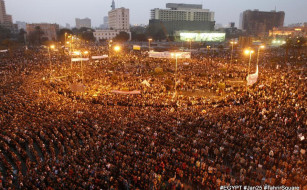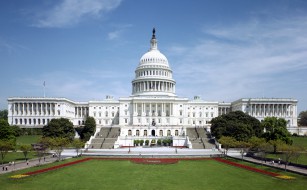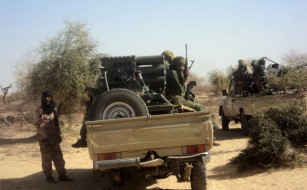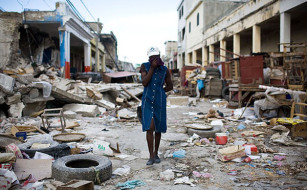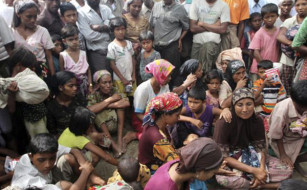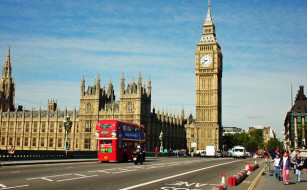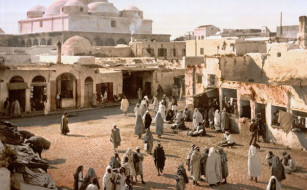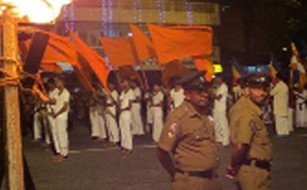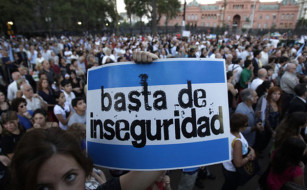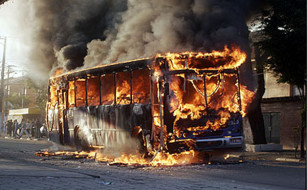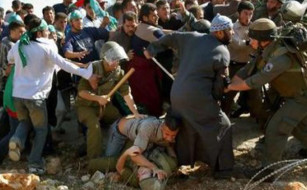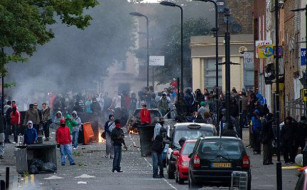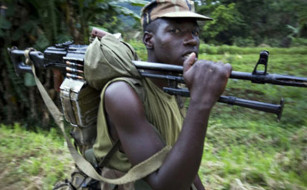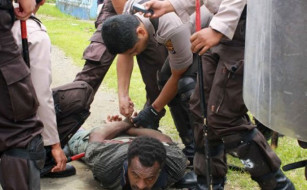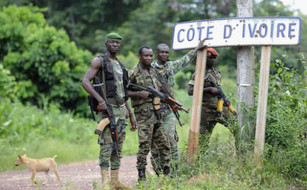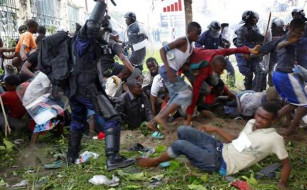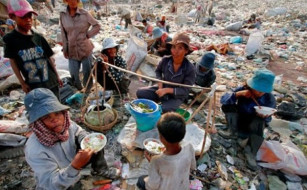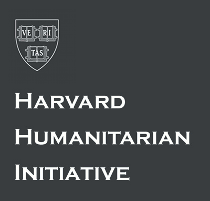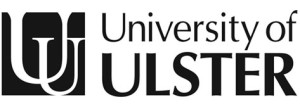In Amenas: the need for an international enquiry
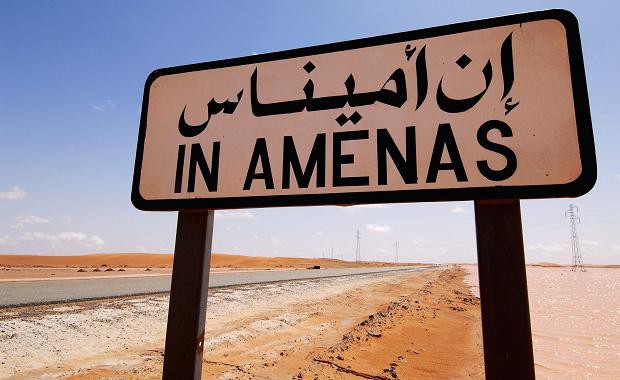
Three people (Americans) were killed and 264 injured by the two terrorist bombs planted near the finish of the Boston marathon on 15th April, 2013. Just under three months earlier, some 80 people died in the terrorist attack on the Tigantourine gas plant near In Amenas in the Algerian Sahara. Some 39 (possibly more) ex-patriot workers at the plant were killed, including three Americans, as well as some 30 of the attackers and at least eleven (possibly more) Algerian soldiers.
It does not require a detailed analysis to appreciate that while the Boston attack has and continues to receive massive global media coverage, In Amenas quickly faded from the news, even though Al Qaeda in the Islamic Maghreb, the Al Qaeda franchise linked to the attack, is, according to the UN security office, the most active of the various Al Qaeda franchises.
There are several reasons for this. One is that the In Amenas attack was handled through the imposition of a complete ‘information blackout’. Neither media, local or international, nor foreign government or company representatives were allowed near the site. All information was controlled by and filtered selectively and minimalistically through the Algerian security services.
A second reason is that the case was ‘solved’, in terms of who did it and why, within a couple of days. According to the Algerian authorities, the alleged mastermind of the attack was Mokhtar ben Mokhtar (MBM) with the actual leader of the attack being Mohamed Lamine Bouchneb. Even though no firm or verifiable evidence was offered by the Algerian authorities as to how this information was obtained, it appears to have been accepted readily and unquestioningly by Western intelligence agencies and their governments and the corporate media. As for the motive, it was quickly accepted, again with little or no verifiable evidence, that the attack was in revenge for France’s military intervention in Mali and Algeria’s provision of overfly rights to France’s military aircraft.
In what might be seen as an attempt to give the incident official closure, on April 23rd an Algeria court passed the death sentence on MBM in absentia and on Bouchneb posthumously. MBM was actually reportedly killed in Northern Mali on March 2nd, although there is no confirmation of this, while Bouchneb was said by the Algerians to have been killed in the bloodbath (see below) at In Amenas. In fact, there is no firm evidence, apart from the questionable statements of the Algerian security services, that MBM was even alive at the time of the In Amenas attack. He had previously been reported killed (for the seventh time) in fighting between MNLA and Islamist forces at Gao (Mali) on June 26th 2012.
The April 23rd court hearing itself appears to have been something of a farce, at least in so far as no verifiable evidence of either MBM’s or Bouchneb’s involvement in the In Amenas attack appears to have been presented, apart from the say-so of the Algerian authorities. Nor was there any sign of any such evidence, or lack of it, being subjected to cross examination by any semblance of a defence counsel. That, or course, is not surprising as Algeria’s judicial system is now firmly under the control of the state’s secret police, the Département du Renseignement et de la Sécurité (DRS). Indeed, few outside the British government, a stalwart ally of the Algerian regime, its FCO and its Special Immigration Appeals Commission (SIAC) are now prepared to give much credibility to Algeria’s judicial system.
In my initial article on the In Amenas terrorist attack, entitled “A new phase in the war on terror?” Analysis of the terrorist attack on In Amenas (Algeria) and events in northern Mali”[1], written two weeks after the attack and published on the ISCI website on February 14th, 2013, I raised a number of questions that pointed to the strong possibility, indeed likelihood, of collusion between the terrorists and Algeria’s security services, notably the DRS.
Since that article was published, more information indicating that Algeria’s DRS may have been responsible for the attack, has come to light. There are three new pieces of evidence which I wish to highlight here. The first concerns further changes in the story that the Algerian government has put out on the route taken by the terrorists in arriving at In Amenas. The second and most important piece of new evidence is the apparent identity of Bouchneb’s DRS handler. The third is the body of evidence provided by the former Algerian army officer, Habib Souaïdia, to which I could only make brief mention in my initial article, as it was published on February 11th and therefore could not be included, beyond a brief mention and reference, in my ISCI February 14th article.
I will deal with each of these three in turn:
(1) What was the route taken by the attackers?
When my first article (February 14th) on this subject was published, the Algerian authorities had given three different versions of the route taken by the terrorists. That has now risen to five. This demonstration of ‘confusion’ merely contributes further to the impression that the Algerian authorities are involved in a ‘cover up’ designed to mask a complete failure of their security system, complicity or both.
The first statement came from the Interior Minister, Dahou Ould Kablia in the early stages of the incident. He stated that the attack did not come from Libya.
Then, on January 19th, an article in Liberté written by the newspaper’s deputy editor Mounir B (Boudjemaa), a leading mouthpiece of the DRS, confirmed that the attack had come fromLibya. This then seems to have been confirmed by Ould Kablia.
On January 21st, following an official denial from the Libyan government, Ould Kablia attempted to clarify the situation by saying that the attackers had come from Aguelhok in northern Mali, crossing the Algerian-Malian border and then the Algeria-Niger frontiers (a bit of a geographical contortion) before getting to the Tigantourine gas plant via places the Minister named as ‘Abid’ and ‘Ijil’. The trip was said to have taken two months.
If the attackers had come from Mali, whether via Niger or not, they would have had to cross well over 1,000 km of Algerian territory. Security in those parts of Algeria is so tight that such a journey would have been virtually impossible without the collusion of the security services.
When the Algerian authorities realised the implausibility of this version of events, they reverted to the Libya option, which became the fourth ‘official’ version of events. The government said that it was now certain the terrorists had come through Libya as they had been able to access satellite positioning of the calls made on their phones.
However, if the attackers had crossed from Libya, as the Algerian authorities claimed, it raises a number of awkward questions. For instance, how had the attackers been able to cross a border which was not only ‘closed’, at least ‘officially’, but allegedly heavily guarded by several thousand border guards who the government claimed to have posted there to control the post-Gadaffi arms trafficking from Libya.
Then, on February 23rd, an article in the Wall Street Journal (WSJ) said: “Algiers-based antiterrorism investigators claim to have retraced part of a 1,200-mile itinerary followed by the militants from the small hamlet of Aguelhok, in Mali, along Algeria’s borders with Niger and through southern Libya, by harnessing the logbooks of the satellite phones they carried.” This fifth version of events emerged on the eve of Algerian Prime Minister Abdelmalek Sellal’s visit to the site of the attack on February 24th.
This story may be true. But, it suffers from a number of problems. Firstly, Aguelhok is not a likely starting point for the simple reasons that the Malian Islamists were known to have been gathering at that time in other parts of Mali. Also, since the massacre of Mali army soldiers by Islamists at Aguelhok on January 24th, 2012, Islamists, according to our informants, have tended to keep away from Aguelhok. Indeed, it is probably the last village or town in Mali from which they would have set out on such an operation!
Secondly, travelling along “Algeria’s borders with Niger” does not seem a wise route to have chosen, simply because that region is heavily secured on both sides of the border.
Thirdly, how do these satellite phone positions marry up with those claimed to have been obtained by the Algerians when they said that the terrorists came through Libya? It is unlikely that they would have converged on In Amenas from opposite sides of the Sahara!
We should also add that terrorists avoid the use of satellite phones on such operations for the simple reason that their positions can be tracked. If, however, they had been assured a safe passage, then revealing their location would not matter.
(2) Who was Bouchneb’s DRS handler?
As I described in my initial article, there is substantial evidence to show that Bouchneb was a DRS agent/operative. He acted as the agent provocateur in the attack on Djanet airport in November 2007, which the Algerian authorities falsely identified as being undertaken by AQIM;[2] he undertook the abduction of Ms Mariani on behalf of the DRS in February 2010[3] and he was a regular visitor to the DRS-managed AQIM training camp at Tamouret.[4] We also now know that he was in charge of the drug and other trafficking networks running through SE Algeria and SW Libya. He may well have undertaken other terrorist assignments on behalf of the DRS about which we are still in the dark.
If, as the Algerian authorities have stated, Bouchneb was the leader of the In Amenas attack, the key question is whether he undertook the operation on his own initiative, as a rogue operative, or on the instructions of the DRS. Given Bouchneb’s track record as a DRS operative and the Algerian government’s confused and contradictory accounts of the terrorists’ route to In Amenas, the latter would seem the more likely. If that was indeed the case, the question becomes: who was his handler in the DRS?
Former inmates of the DRS-AQIM Tamouret training camp have made frequent reference in their testimonies to “The Great One”, some sort of dignitary, perhaps a religious personage, whose ‘word’ superseded all others. Prior to the In Amenas attack, I had never managed to identify “The Great One”. Then, a few weeks after the In Amenas attack, I was able, though the assistance of a close colleague, to re-access the testimonies from Tamouret about the activities of Bouchneb at the camp. During the course of these new interviews, it was revealed that “The Great One” was a nick-name, a play on words, as is customary amongst AQIM networks, with the key word being “Ali” – as in Ali ibn Abj Talib, the Prophet Mohamed’s cousin and son-in-law.
According to this new testimony, General Rachid (‘Attafi’) Laalali, head of the DRS’s external security service, the Directorate for Documentation and External Security (DDSE), was nick-named “The Great One” because of the reference to the word ‘Ali’ in his surname.
The DRS, under the command of General Mohamed Mediène, known as “Tewfik”, contains three directorates: the Directorate for Internal security (DSI), under the command of General Athmane (‘Bachir’) Tartag; the Directorate for Documentation and External Security (DDSE), under the command of General Rachid Laalali, and the Directorate for Central Security (which oversees the security of the army) under General M’henna Djebbar.
According to the information received from former inmates of the Tamouret camp, Bouchneb was said to have had a close and “privileged relationship” with General Laalali. Indeed, the key informant is of the view that Bouchneb was too senior and important for the DRS to let him be killed at In Amenas. (That is a subject to which I return in part 3 below.)
This identification of General Laalali as Bouchneb’s likely handler ‘makes sense’ in terms of General Laalali’s external responsibilities and the fact that much of the DRS’s fabricated terrorism and related activities, such as drug smuggling and the establishment of AQIM in the Sahara-Sahel, are either outside Algeria’s borders or, as demonstrated in the DRS support for Mali’s insurgent Islamists during 2012 and the Gadaffi regime during Libya’s revolution in 2011, almost perpetually crossing them.
Perhaps the greatest corroborating evidence of General Laalali’s role in ‘managing’ operatives in these sectors was his sudden flight, as mentioned in my first article, from Berlin to Bamako on December 9th, 2010 to rescue Sultan Ould Badi, one of the Sahel’s main drug traffickers and now a leader of MUJAO, from arrest and prosecution at the hands of the Malian police authorities.[5] If General Laalali had responsibility for the DRS’ shady operations relating to fabricated terrorism and drug smuggling in Algeria’s southwest border regions, it is logical that he would have the same responsibilities for Algeria’s southeastern borderlands: Bouchneb’s sector.
This new information raises the critical question of whether Generals Tartag and Laalali were working together in planning some sort of ‘false-flag’ terrorist operation at In Amenas, similar, as has been suggested by French intelligence sources, to that at Tibhirine in 1996, or whether they were following their own individuals strategies, perhaps seeing each other as rivals in the succession to General Mediène’s overall command of the DRS.[6] Habib Souaïdia’s evidence throws some light on this.
(3) Habib Souaïdia’s evidence: internal rifts within and between the DRS and army
Habib Souaïdia was a former Algerian army officer (1989-1995) and author of La Sale Guerre (2001) who blew the whistle on the DRS’s role in Algeria’s ‘Dirty War’ of the 1990s.[7] His analysis of the In Amenas attack was published[8] too late for me to include it in my first ISCI article, apart from making a brief reference to it.
In La Sale Guerre, Souaïdia revealed how the DRS had not only infiltrated and manipulated the armed Islamic groups in Algeria but also masqueraded as Islamists, thus succeeding in portraying them as responsible for a large proportion of the estimated 200,000 killed in the ‘Dirty War’. Victory in the libel case brought against him in Paris by Algeria’s former defence minister, Khaled Nezzar, rubber-stamped Souaïdia’s book as the authoritative account of the criminality of the Algerian regime and its secret service.
Thanks to his contacts in the DRS and the Algerian army, Souaïdia, has again been to throw light on what happened amongst the Algerian security forces at Tigantourine.
In most countries, there is one special service dedicated to managing such crises as Tigantourine. However, in Algeria’s case, three units/commands were involved, totaling 450 men: a recipe for disaster. They were:
- The GIS (Groupe d’intervention spéciale), which is answerable to the DRS.
- The Gendarmerie’s SSI (Section spéciale d’intervention), an operational unit created in 1989 in the image ofFrance’s élite force.
- Three parachute commando companies, from the 5th, 12th and 18th regiments.
The commanders of all these groups were in the operational control office set up close to Tigantourine. They were:
- Major-General Athmane Tartag (aka ‘Bachir’), the DRS’s new ‘strong man’, who had come directly from Algiers with his GIS men;
- Major-General Ahmed Boustila, head of the National Gendarmerie;
- Major-General Abderrezak El-Chérif, a parachutist and commander of the 4th military region, Ouargla;
- General Hadji, also of the 4th military region, along with his HQ staff; and Colonel Abdelhafid Abdaoui, commandant of the regional gendarmerie.
Fighting broke out between these commanders almost immediately. Tartag set the ball rolling by calling Abdaoui an ‘uled el-qahba’ (son of a whore). The reason for Tartag’s loss of control, according to Souaïdia, was because Abdaoui, on the orders of his commanding officer, had begun discussions with the hostage-takers and local notables. This was followed by a clash between General El-Chérif and his officers and Tartag’s DRS Officers, who wanted to take over control of the operation. Souaïdia says that the tension between the groups was so high that one could hear the click of the safety catches on their weapons.
In short, this unseemly clash between senior DRS officers on the one hand and those of the gendarmerie and army on the other led to the entire operation spiraling out of control and to the resulting bloodbath. The Algerian prime minister’s reports of his country’s ‘united command’ of the situation could not have been further from the truth.
By 17 January, the second day of the siege, the situation had become very tense. After entering the site, the assailants searched for the expatriates. Some had already been killed the previous day in the attack on the bus heading to the airport, but 30 were being held by 11 terrorists in the living quarters. According to Souaïdia, Tartag took “the brutal decision” to bombard them from a distance. Tartag ordered three M24 helicopters to fire laser-guided missiles into the group, killing the 11 terrorists along with the 30 hostages. General El-Chérif was reportedly angered by and wholly opposed to such brutality.
The security forces then set about tracking down the remaining terrorists. On 19th January, four terrorists who were holding three Japanese and two others (possibly Americans) were encircled by a group of parachutists and members of the SSI. Information released by the Algerian authorities claimed that “the hostage-takers tried to leave the base with their hostages in their vehicles”. According to Souaïdia, this statement was untrue. Instead, Tartag, in defiance of General El-Chérif, ordered an M24 helicopter to fire three missiles into the vehicle. In addition to killing the terrorists and their hostages, nine parachutists and two gendarmes were killed, with 17 others severely wounded.[9]
Outstanding questions: the need for an international enquiry
In Souaïdia’s opinion the security forces had all the means available to prevent the terrorists leaving the base. There was no need to inflict such a massacre. Why then, did Tartag ‘lose it’? Why did he decide to kill so many people in a bloodbath that appears to have been quite unnecessary?
The Algerian authorities have said that the terrorists intended to blow up the plant. Such a statement must be regarded with much skepticism, for at least three reasons.
First, over the last two decades of terrorism in Algeria, no significant attack has been undertaken against any oil or gas installation. Indeed, many analysts believe that there has been a tacit agreement between the DRS and the terrorist groups that they have infiltrated and come to manipulate, that the country’s oil and gas industry is “off limits”. The events in Maliare not sufficient for that to have changed, especially as the Islamist insurgent groups in Mali, as I explained in my first article, have been broadly supported and provisioned by Algeria’s DRS.
Second, Souaïdia provides strong evidence to indicate that the objective of the terrorists was to take hostages, not to blow up the plant. Indeed, the explosive belts, land mines and other such equipment they carried were in keeping with a hostage-taking operation, not with blowing up the plant.
Third, if the attack on Tigantourine was led by a DRS agent, namely Bouchneb, as the evidence suggests, it is hardly likely that it would have been to destroy such a vital component of the national economy.
Rather, all the signs, especially Souaïdia’s evidence, suggest that the terrorists were bent on taking hostages, not blowing up the plant. But, if that was their intent, something very clearly went drastically wrong. That ‘something’ appears to have been the initial attack on the bus that was taking employees from the plant to the airport. Most likely, the terrorists had probably not expected to encounter such resistance from the guards on the bus who opened fire on the terrorists with considerable bravery and efficiency. Whatever it was, the terrorists soon found themselves trapped in the plant and its living quarters, with some 132 foreign nationals and over 500 Algerians, and surrounded by some 450 army, gendarmerie and DRS ‘social forces’.
This, of course, raises the question of why the terrorists wanted to take hostages. As I mentioned in my initial article, a French intelligence source, suggested to me that the In Amenas attack was a replica of the murder of the Tibhirine monks in 1996. In other words, it was a ‘false-flag’ operation, which, like the Tibhirine case, went wrong. The supposed plan was that MBM, or perhaps Bouchneb directly, would arrange for the seizure of hostages, rather in the manner in which the Tibhirine monks were taken, and that they would be ‘rescued’ by the Algerian army. If this was the plan, then it had all the makings of being a ‘win-win’ situation for the Algerians. Firstly, it would demonstrate to the international community that Algeria had been correct in warning that military intervention in Mali would trigger terrorist reprisals. Secondly, it would prove to the West that Algeria was a capable and essential partner in the war on terror and the ‘war’ being waged by France in Mali.
I believe this second point can be taken further. The West (the US, Franceand UK) gave the green light to the Algerian junta that seized power in 1992, not only for their coup d’état, but also their ‘Dirty War’, Habib Souaïdia’s La Sale Guerre, against the Islamists. Moreover, and as I have argued at length and in great detail in The Dying Sahara (Pluto 2013), the West has colluded with the Algerian regime since 2002, mainly through its DRS, in setting up what I have referred to as “Al Qaeda in the West for the West”. The West’s close alliance with Algeria and its DRS since 2002-3 has enabled the West, through Algeria’s long practice of “creating its own terrorists”[10], to not only raise the profile and threat of Al Qaeda as and when needed, but, and perhaps more importantly, to show, thanks to Algeria’s “creation of its own terrorists”, that terrorism is not only a real threat, but that the West, through its Algerian proxy, is prepared to fight it.
That is how In Amenas has been portrayed to the world. Algeria, the West’s ally in the Global War on Terror (GWOT), the tough man alongside the US and UK in the GWOT, demonstrated that it was not even prepared to negotiate with terrorists; only to eliminate them, regardless of the price.
But that was not how In Amenas was planned. Rather, I believe the DRS’s plan to replicate Tibhirine at In Amenas was designed to be a warning to the West. For last few years, especially since the beginning of the Arab Spring, the West, as I have explained in The Dying Sahara, has been losing patience withAlgeria.Algeria’s support for the Gadaffi regime in Libya against the NATO-supported rebellion, followed by Algeria’s central involvement in the destabilisation of Mali, has not gone down well in the West. I believe there was an increasing fear in the Algerian regime, probably felt most keenly by the DRS, that the West might finally loose patience with the Algerian regime and cast it adrift. To stop any such ideas gathering momentum, as was likely in 2013, I believe that the DRS felt that the West needed to be taught a lesson; to be reminded just how much it needed Algeria in its war on terror.
If such speculation is correct, In Amenas was intended to be that lesson. The DRS would orchestrate foreign nationals to be taken hostage, with their release being affected, as in May 2003, through the heroic actions of the Algerian army. But, like Tibhirine, the plan went wrong.
I believe that Tartag’s countermanding of Generals Boustila and El-Chérif from pursuing any dialogue with the terrorists, followed by his decision to inflict an unnecessary bloodbath, can be explained in the following way. His decision to kill the terrorists, irrespective of the safety of the hostages, enabled him to put an end to the unfolding debacle and, in so doing, to reaffirm, in the most definitive way possible, the strong-man image of the Algerian army and its determination to eliminate terrorists irrespective of the cost.
Tartag’s action enabled Algeriato retain and perhaps even enhance its ‘strong man’ image. However, the question remains as to whether Tartag’s refusal to engage in any dialogue with the terrorists and his murderous decision to obliterate them, with no consideration for the safety of the hostages, were driven by his determination to eradicate all possible evidence of the DRS’s role in the operation.
We are unlikely to find out, as it is most unlikely that there will ever be a full or proper enquiry into In Amenas. The matter has been put to bed by bothAlgeriaand the West. That is partly a matter of expediency, in as much as Algeria would obviously refuse to participate in any such enquiry. And the West is also too needy of Algeria’s oil and gas. But it is also because Western governments, as a result of the close working relations of their intelligence agencies with the DRS, are too incriminated.
US, British and French intelligence services are aware of the evidence put forward here. But they have no choice but to deny it. And the corporate media can be relied upon to stay in line.
[1] http://statecrime.org/online_article/a-new-phase-in-the-war-on-terror-a-report-on-events-in-algeria-and-mali/
[2] For details, see Jeremy Keenan, The Dying Sahara (Pluto, 2013), pp. 85-89.
[3] For details, see The Dying Sahara, op.cit. pp. 210-13.
[4] For details, see The Dying Sahara, op.cit. pp. 184-5.
[5] For details, see The Dying Sahara, op.cit. pp. 221-2.
[6] General Mediène, head of the DRS, has been in poor health for the last two years and is considered likely to retire shortly.
[7] In my initial article I described Habib Souaïdia as a former DRS officer. That was incorrect. He was, in fact, an army officer who had close working relations with and knowledge of DRS affairs.
[8] Habib Souaïdia, “Révélations sur le drame d’In-Amenas: trente otages étrangers tués par l’armée algérienne, au moins neuf militaires tués. ” Algeria-Watch, 11 février 2013. http://www.algeria-watch.org/fr/aw/souaidia_in_amenas.htm
[9] An Irish engineer who survived is reported as having said he saw four trucks of hostages being blown up by the Algerian forces in this way. The Irish Times, 18 January, 2013. Accessed at: http://www.irishtimes.com/news/dozens-of-hostages-missing-as-desert-stand-off-goes-on-1.1071538.
[10] This has long been known to US intelligence agencies. See, for example, John R. Schindler’s ‘whistle-blowing’ article: ‘The Ugly Truth about Algeria’. The National Interest, 10 July, 2012. Accessed at: http://nationalinterest.org/commentary/the-ugly-truth-about-algeria-7146.
Connected Resources
-
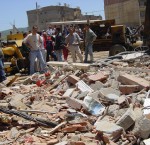
Algeria and the threat of natural disasters
-
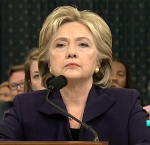
Thank you Hillary! Secretary Clinton’s ‘emailgate’ revelations about Algerian state crimes
-
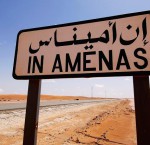
Report on In Amenas: Inquest Cover-Up and Western Involvement in Algerian State Crimes – Jeremy Keenan
-
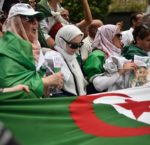
Who rules Algeria? Part 1: The manoeuvres of General Bouazza Ouassini and other ‘strong men’
-
Algeria’s ‘one-eyed’ American general
-

Jeremy H. Keenan




